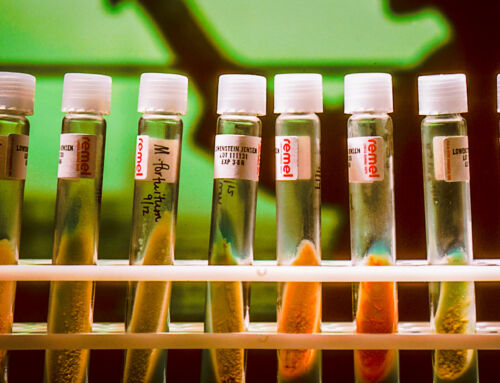View by Topic
Recent Articles
-
Congress Blocks California’s Gasoline Car BanSaturday, May 31st, 2025
-
EPA Will Keep Current Limits for “Forever Chemicals” in Drinking WaterSaturday, May 24th, 2025
-
Court Indefinitely Pauses SEC Climate Rule LitigationSaturday, May 17th, 2025
-
Maryland is About to Regulate Mold But is the Cart Before the HorseSaturday, May 10th, 2025
View by Month/Year
“Green Building Law Update” Headlines
Recent Articles & News from
Stuart Kaplow’s blog
at GreenBuildingLawUpdate.com
- EPA Will Keep Current Limits for “Forever Chemicals” in Drinking Water May 25, 2025
- Court Indefinitely Pauses SEC Climate Rule Litigation May 18, 2025
- Maryland is About to Regulate Mold: But is the Cart Before the Horse? May 11, 2025
- BEPS Redux: The Most Far Reaching Environmental Legislation of the 2025 Maryland General Assembly May 4, 2025
Subscribe to the Green Building Law Update!
Stuart Kaplow brings his expertise and extensive experience to the table with his unique digital publication, "Green Building Law Update". Subscribers receive regular updates to keep them informed about important issues surrounding Environmental Law, Green Building & Real Estate Law, as well as the emerging demand for Environmental Social Governance (ESG).
Get fresh content through the lense of Stuart Kaplow's cutting-edge expertise, innovative commentary and insider perspective. Don't miss another issue! Subscribe below.

Eyeglasses in the Sights of Climate Change Activists
In his recent video, “Can We Stop Global Warming?” Bill Gates provides us with an interesting, if not somewhat alarming, statistic, the average greenhouse gas (GHG) emissions from producing a single pair of eyeglasses amount to 8.2 pounds.
This figure doesn’t include emissions from glasses cases or cleaning cloths, nor significantly the environmental costs of delivery to the end user. While metal eyeglass frames contribute more to GHG emissions than plastic ones (.. actually most are acetate), both contribute to the growing carbon footprint of global manufacturing.
This revelation adds to the recent conversation about the environmental impact of consumer goods, even those as essential as medical devices like glasses. And yes, while it’s true that sustainability and environmental awareness are worthy, this raises a moral question: at what point does the all but singular focus on greenhouse gas emissions hinder, rather than help, human health and progress?
A Surprising Focus on Eyeglasses
Let’s face it: discussing the carbon footprint of eyeglass frames can seem like a stretch, but it is a subject de rigueur in social media. Are we veering into hysteria when we start accounting for the GHG emissions of individual medical devices, especially ones as vital as eyeglasses? It’s a fair question ever when considering individual consumer devices, and one we’ve been guilty of perpetuating in our blog post about smartphones.
The scrutiny of eyewear manufacturing is part of a broader trend to try to quantify the environmental costs of everything. It’s good to communicate environmental impact to stakeholders. However, when cradle-to-grave analyses dive too deep into matters of an individual’s physical, mental and social well being, each made better by eyeglasses, they may obstruct rather than aid the critical global human health need for corrective vision.
We do not recall any public hue and cry over the GHG emissions of syringes, blood pressure monitors, thermometers, or bandages and dressings, so it is curious eyeglasses are the boogeyman of the day.
Vision Impairment: A Global Health Crisis
More than 4 billion people worldwide wear eyeglasses, and for good reason.
But, according to the World Health Organization, more than 2.2 billion people suffer from some form of uncorrected near or distance vision impairment. This is not just a minor inconvenience; it’s a public health crisis that stifles education, employment, and quality of life. For children, uncorrected vision problems can significantly impact development and learning, making early detection and treatment crucial.
Eyeglasses are more than just a consumer product, they’re a lifeline to clarity, education, and opportunity for billions. The cost per pair might be as low as $2, but the huge unmet demand for affordable eyewear has persisted for decades, particularly in low and moderate income countries.
The Environmental Cost of Eyeglasses: Freight and Globalization
Interestingly, a recent academic study that gained widespread media attention pointed to an alarming trend: globalization has not only expanded access to eyeglasses but also increased GHG emissions associated with their transport. The study noted a more than fourfold increase in emissions from global transport, with the logistics of moving lenses and frames across continents contributing significantly to the environmental impact.
For instance, it’s not uncommon for lenses to be cut and shaped in one part of the world (.. one of the largest lens manufacturing plants is in France), with frames manufactured in another (.. more than 90% of all eyeglass frames are produced in China). Both are then shipped to North America, whether ordered from a brick and mortar store on online retailer via expedited shipping including overnight delivery, a notoriously high emission mode of transport. The study recommends that optometrists and wealthy Western country patients be mindful of these global supply chains when ordering lenses and frames, suggesting that modifying these routes could be an essential part of mitigating climate change. Really?!
Balancing Sustainability with Human Need
Undoubtedly, any significant aim at mitigating climate change requires contributions from many, including the medical field and yes, even optometry. However, the need for eyeglasses is not just a commercial or environmental issue, it’s a global health crisis. For more than 2 billion people, the inability to access affordable eyewear is a barrier to human quality of life and progress.
Few would oppose exploring sustainable solutions, but at the same time, we cannot allow GHG emission reduction goals to further deprive people of the vision correction they need. There’s a fine line between responsible environmental stewardship and inadvertently impeding human well being, and the global eyeglasses industry sits squarely on the side of human beings.
While it’s important to be aware of the GHG emissions from consumer products, we must keep perspective. The global need for corrective vision is far too critical to be stymied by well intentioned but potentially harmful anti global warming policies. Vision correction is essential to improving quality of life, and for more than 2 billion men, women, and children still in need, eyeglasses are the key.
Tortoise shell eyeglasses are not only a classic choice for eyewear, but also a good example of moving toward a sustainable future. Originally, these frames were made from real tortoise shells, but this practice fell out of favor in the 1970s due to ecological concerns and today tortoise shell ‘style’ eyeglasses are made from acetate.
Conclusion
There is little dispute that we should strive to reduce our environmental footprint. However, eyeglasses are medical devices and any such push must be balanced against a pressing global health need. Sustainability is important, but for billions of people, the ability to see clearly is even more urgent.
Rather than focusing solely on GHG emissions, we should work towards solutions that don’t compromise accessibility to vital medical devices like eyeglasses. After all, the goal of climate change mitigation should not blind those who already face a vision crisis, it should illuminate a way forward that supports both the environment and human progress.









